This time, I’d like to introduce to you “通潤橋(Tsujunkyo, means Tsujunkyo bridge)” in 山都町(Yamato-cho, means Yamato-town) .
It’s a single arch stone bridge which was built in 1854 conducted by the brothers, 宇一(Uichi) and 丈八(Jouhachi), who were one of the famous stonemasons in Kumamoto.
Tsujunkyo bridge is the symbol of Yamato-town and the way it spots water from the top is dynamic. Because of the importance in historical and technical aspects, it’s a popular place for tourists and also for school trips.
It represents the great technique of stonemasons in Kumamoto and gives you interesting stories.
Let’s learn about Tsujunkyo bridge together and I hope you’ll get interested in it!
Contents
- 1 Tsujunkyo bridge(通潤橋) in Yamato-town Kumamoto
- 1.1 What was the purpose of building Tsujunkyo bridge(通潤橋)?
- 1.2 Who were involved in building Tsujunkyo bridge(通潤橋), Yamato-town Kumamoto?
- 1.3 The amazing technique of water supply.
- 1.4 Interesting stories about Tsujunkyo bridge, Yamato-town Kumamoto.
- 1.5 Visit Tsujunkyo bridge(通潤橋)!
- 1.6 【Information and links】
- 1.7 共有:
Tsujunkyo bridge(通潤橋) in Yamato-town Kumamoto
What was the purpose of building Tsujunkyo bridge(通潤橋)?
Tsujunkyo was built in 1854 crossing the valley of 五老ヶ滝川(Gorougataki river), south of outer rim of crater in Aso.
The area is a deep valley with many waterfalls. It was very difficult to go to the other side of area beyond the river. People used to build wooden bridges over the rivers but because of the fast stream, typhoons and floods, those were easily broken.
In the past, 白糸台地(Shiraito daichi, means Shiraito tableland), which is one part of Yamato-town, had food crisis because of lacking water. Even though they had rain, Shiraito tableland was formed of volcanic ash from Mt.Aso so the land couldn’t hold water. There are several rivers running around Shiraito tableland but because of the deep valley, they couldn’t irrigate water from them. Still they needed to pay tax to the government by crops so many families were forced to send their children to other houses as a workforce to earn money.
On the other hand, 城山(Jouzan) ,which is the other side of the valley, had plenty of water from 笹原川(Sasawara-gawa, means Sasawara river).
Who were involved in building Tsujunkyo bridge(通潤橋), Yamato-town Kumamoto?
At that time in Kumamoto, there were people called 惣庄屋(Soujouya) who were the mayors of small part of villages. People went and see their Soujouya and strongly urged to make a bridge which wouldn’t be washed away.
There was one Soujouya, named 布田保之助(Yasunosuke Futa) who was in charge of the area, called 矢部(Yabe).
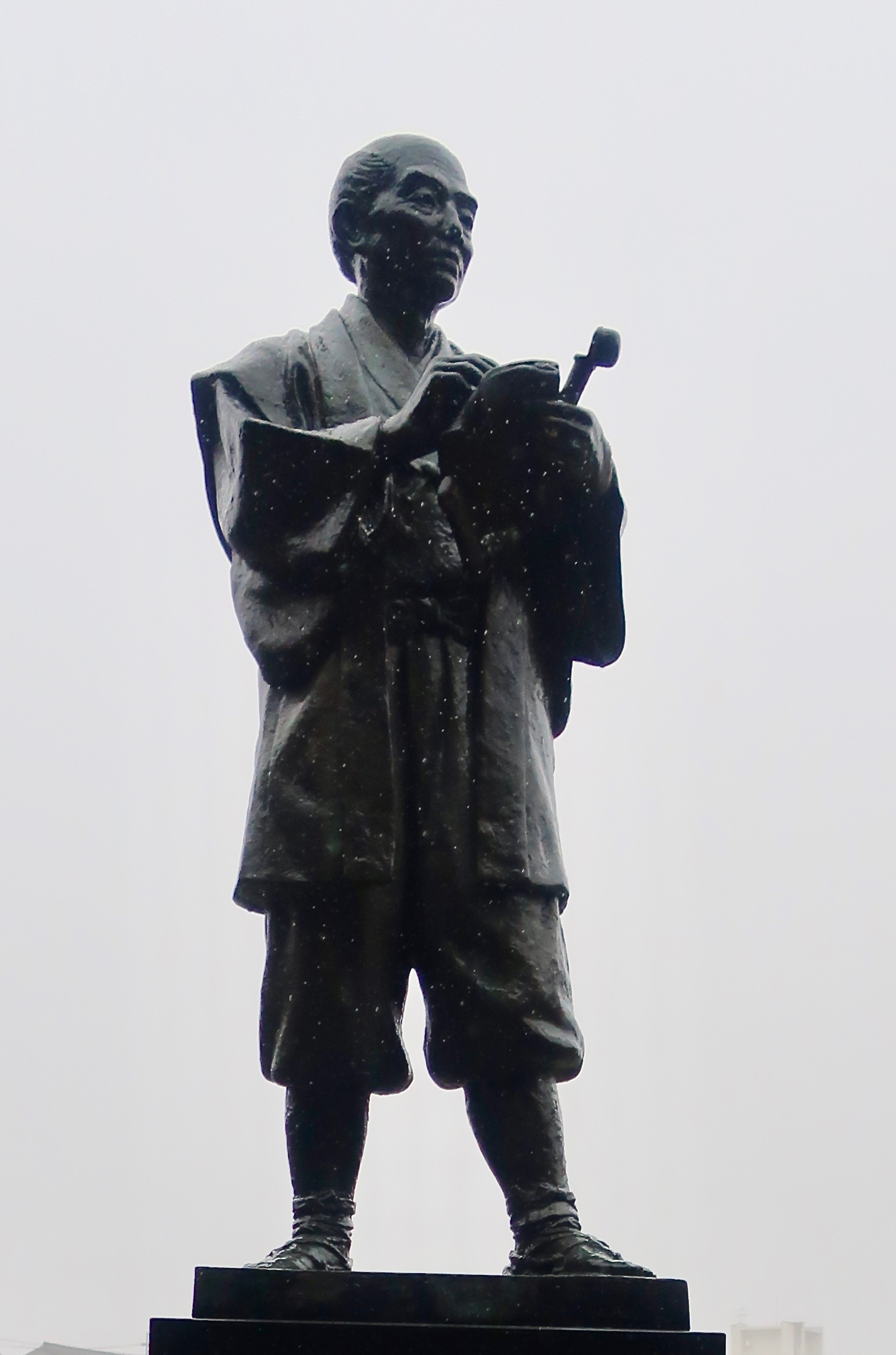
布田保之助(Yasunosuke Futa) Photo credit : Chieko @untappedkumamoto
Futa became the mayor of Yabe when he was 32-year-old. At that time, Yabe was one of the biggest area in Kumamoto.
He lost his father at the age of 10 and had a difficult childhood. He understood how hard the life is and cared about people well. People trusted him and relied on him.
When Futa was 47 years old, 霊台橋(Reidaikyo bridge) was built in Misato-Town.
※ Check the previous article about Reidaikyo bridge!→ http://untappedkumamoto.com/history-culture/1361
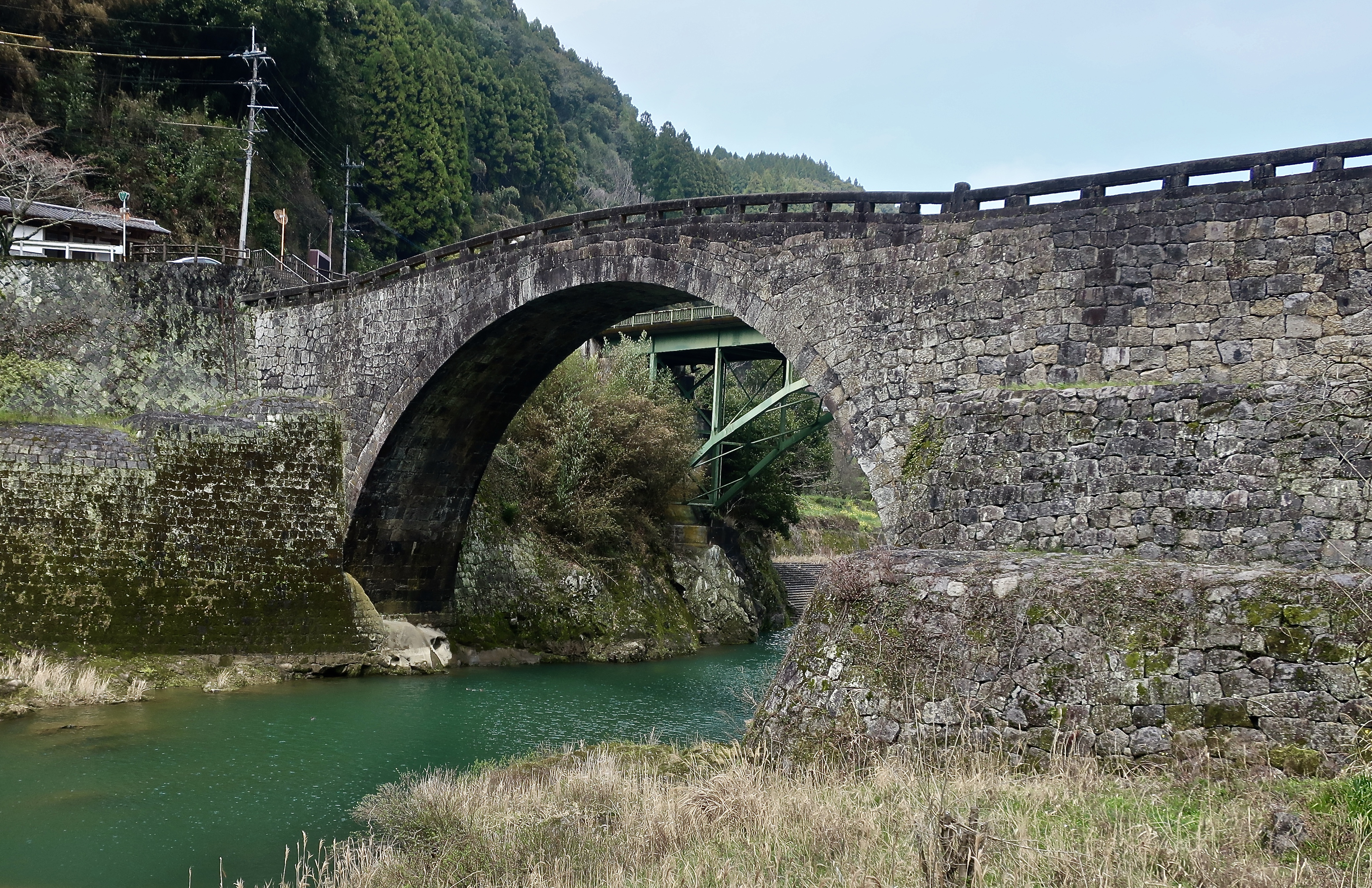
霊台橋(Reidaikyo bridge) Photo credit : Chieko @untappedkumamoto
Futa was surprised to see the size of Reidaikyo(The hight is 16.03m, the length is 89.86m and the width is 5.45m.) and he thought that if it was possible to build a stone bridge like that, they could build one with tubes and bring water to Shiraito tableland.
He went and met the brothers, named 宇一(Uichi) and 丈八(Jouhachi), who were the head stonemasons of Reidaikyo.
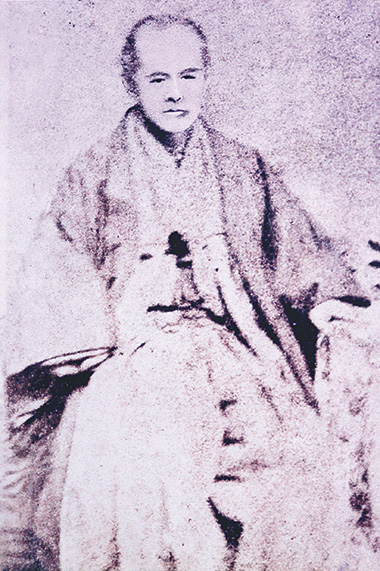
橋本勘五郎(Kangarou Hashimoto) Source : https://ar.kumanichi.com/old/2017/11/19852/
※ Jouhachi was given the name 橋本勘五郎(Kangorou Hashimoto) because of his great achievement of stone bridges and became the most well-known stonemason in Kumamoto. Later in his life, he was invited to Tokyo by the government and built some famous bridges there.
Considering the hight above the sea level of Shiraito tableland and Jouzan, Futa asked them to build 30m high stone bridge.
At first, they turned down the request because they hadn’t involved in such a big bridge which is almost twice high as Reidaikyo. Futa didn’t give up and tried to convince them again and again. In the end, they were moved how passionate Futa was and proposed him to build 20m high bridge instead. There would be some risks, such as earthquake and how bearable the bridge, Uichi and Jouhachi thought that 20m is the highest they could try.
The amazing technique of water supply.
I already explained how stonemasons build stone bridges and what was characteristic about them in the last articles so here I’d like to share the unique aspects of Tsujunkyo bridge.
※ Check the previous article below!
霊台橋(REIDAIKYO BRIDGE) ~LEARN ABOUT THE HISTORY OF STONE BRIDGES AND STONEMASONS~ → http://untappedkumamoto.com/history-culture/1361
When they started the project building Tsujunkyo bridge, the biggest hurdle was 五老ヶ滝川(Gorougataki river).
They decided to build a stone bridge across the Goroutaki river mainly because of two reasons.
One reason is that the location. The place where Tsujunkyo stands is the narrowest part of valley across the Goroutaki river.
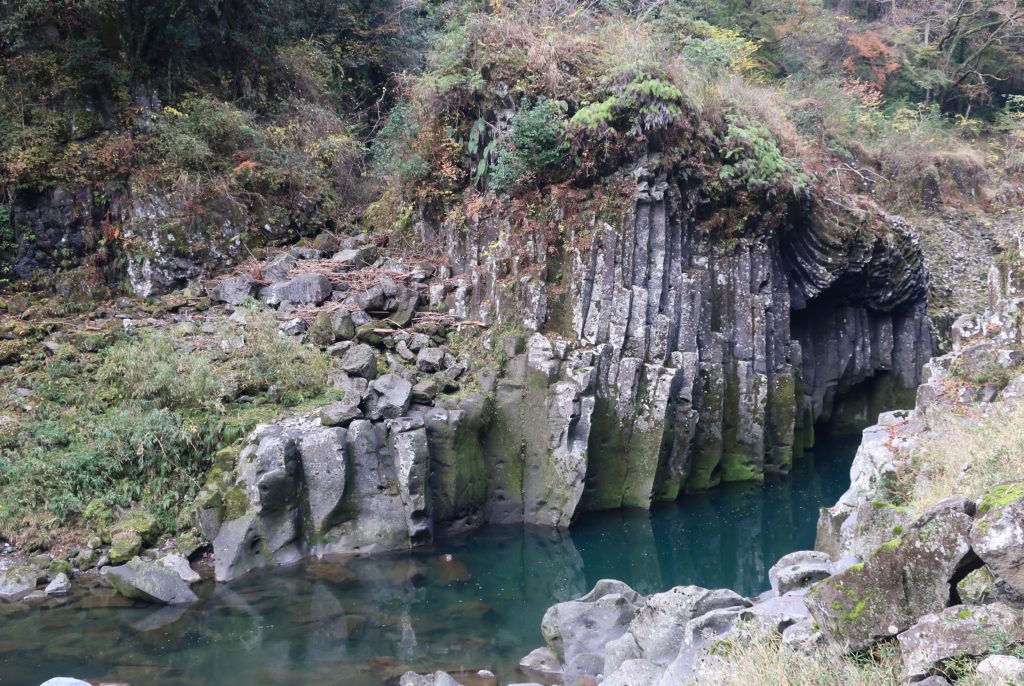
溶結凝灰岩(Youketsugyoukaigan, means welded tuff) Photo credit : Chieko @untappedkumamoto
The other reason is that the materials. Near 五老ヶ滝(Gorougataki waterfall) which locates around the downstream of Gorougataki river, there were plenty of 溶結凝灰岩(Youketsugyoukaigan, means welded tuff) from the eruption of Mt. Aso. Welded tuff is strong but easy to process.
The bridge was supposed to be at least 30m high because the bridge connects two area but the bridge is lower than them.
Water flows from high to low.
Considering about the lack of hight of the bridge, how did they succeed to supply water?
Futa proposed to Uichi and Jouhachi to use inverted siphon theory.
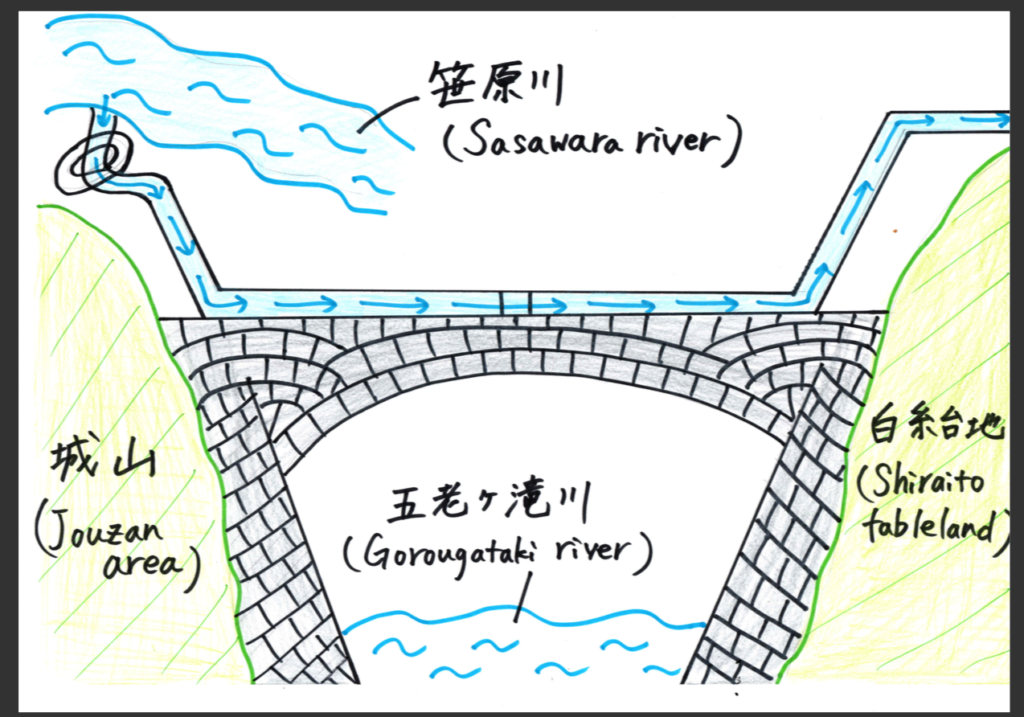
Before involving in this project, Futa had been involved in some civil engineering works and he had heard of the theory.
Even though the bridge is lower than two area, because of the difference of the hight, water from the entrance is absorbed and water splash up at the exit.
Futa had the image by rain gutters.
They started many experiments to use the theory in real.
They made a wooden tube to carry water. For the first try, as soon as they let water go, the tube blow up with the explosion. The water pressure was much higher than they expected.
They tried different experiments such as using thicker wood, making stone tubes, changing the thickness of stones but nothing worked at all.
After many trial, they decided to make some hollowed stone tubes and assemble them and made long tube.
At that time, there was no sealant such as rubber.At joints, stonemasons made natural plaster. They mixed up lime, sand, soil, salt and simmered together.
Preventing from water coming out, they did many experiments such as how much ratio they mix up ingredients and how they should fill plaster between tubes. It is said that after filling plaster, they poked it with a stick 70 times at each point. It shouldn’t be neither too strong nor too soft.
On the top of Tsujunkyo, there are 3 stone tubes. To make this size of stone tubes, they made over 600 short stone tubes and they poked each joints, which is thought to be 5,000,000 times poking!
You can see many stone bridges all around the world but Tsujunkyo is the only stone bridge which has gutters on the bridge.
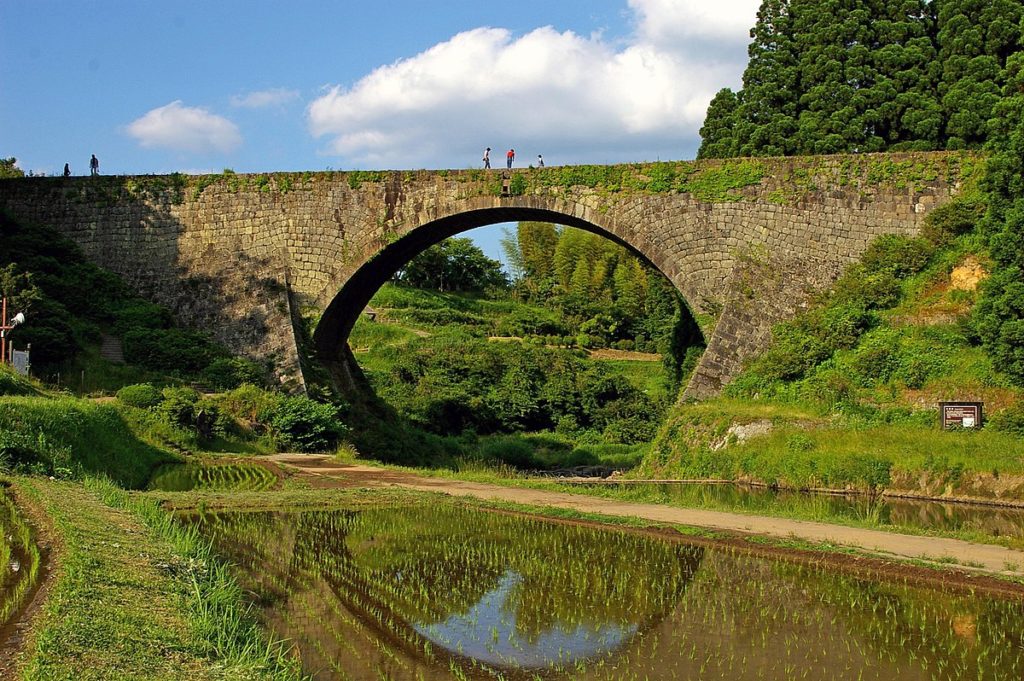
Source : https://ja.wikipedia.org/wiki/通潤橋
Tsujunkyo bridge is 20.2m high, 75.6m long and 6.3m wide.
As a stone bridge built in Edo period(1603-1868), it’s the biggest one in Japan.
Even though the main reason for Tsujunkyo was carrying water, people could walk on the bridge(usually, ditches between the stone tubes are filled). Tsujunkyo bind water and people from two area.
Surprisingly, no one fell down from the bridge in the past.
(After the earthquake in 2016, it’s closed. The stone bridge was not damaged at all but some stone tubes above it was damaged.)
Interesting stories about Tsujunkyo bridge, Yamato-town Kumamoto.
Here, I’d like to share with you some interesting stories about Tsujunkyo.
Dynamic water shooting of Tsujunkyo bridge.
When it comes to Tsujunkyo, people think about the image of dynamic water shooting. Originally, this is not for the performance. The initial purpose is to wash away the waste in the stone tubes but because of the powerful shooting, it became the symbol of Tsujunkyo.
Risking life to succeed building Tsujunkyo.
On the day of taking out 支保工(Shihokou, means wooden frame), Futa, Uichi and Jouhachi wore 白装束(Shiroshouzoku), which is a clothe we wear when we die, and brought a sword secretly.
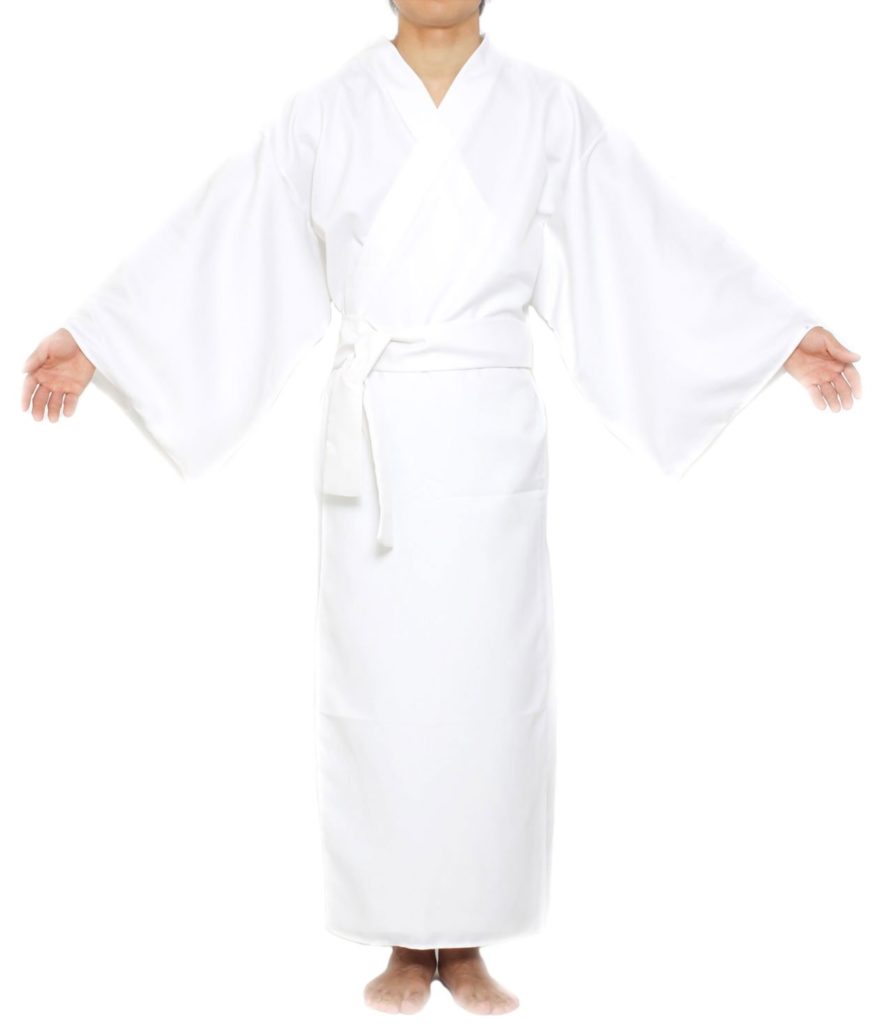
Source : Amazon
If the bridge wouldn’t be succeeded, they were ready to die. For this project, 27,000 people were involved in. They all had hope for the better future. It is clear that how Futa, Uichi and Jouhachi had kept huge responsibility on their shoulder.
Jouhachi, Dedicating and caring stonemason.
As a master stonemason, Jouhachi took good care of the workers. He observed the whole process and people very well.
Sometimes, there was a fight between workers so he went between them and stopped their fight.
Workers accidentally have small stones in their eyes, Hashimoto took it with his tongue.
He built a tight relationship with all the workers and it enabled him to finish that huge construction work.
Punishment for being late for work ; Develop rice field around Tsujunkyo bridge!
There is an interesting story of “朝寝開(Asane hiraki)”, which literally means “the first plowing of rice fields”.
Tsujunkyo bridge was built only in 20 months.
People started to work at the sunrise.
Futa was said to be a strict and punctual man. If a worker overslept or was late for work, Futa ordered them to stay after work and develop new rice field.
Around Tsujunkyo bridge, there are terraced rice fields.
Thanks to the water supply and also workers who overslept, there are many rice fields now. (In 2008, Tsujunkyo bridge and terraced rice fields around the bridge were registered to Important Cultural Landscape.)
Visit Tsujunkyo bridge(通潤橋)!
Thanks to the great people who were involved in building Tsujunkyo bridge, Yamato-town has the biggest number of organic farmers in Japan.
I often go to the local organic shop, called 有機生活(Yuki seikatsu) in west part of Kumamoto-city. (I’ll introduce the shop later!)
I didn’t pay attention much but now I realized that there are so many products from Yamato-town and their products are amazing.
Tsujunkyo bridge is already beautiful as it is but getting to know the history and how it involves our lives now, we’ll feel more familiar to it.
Every year at the first Saturday and Sunday in September, they have a festival, called 八朔祭(Hassaku matsuri, means Hassaku festival). This festival is to say grace to the God of harvest and water. The most interesting thing is the handcrafted dolls They make many them only with natural material and it takes about a month to make one.
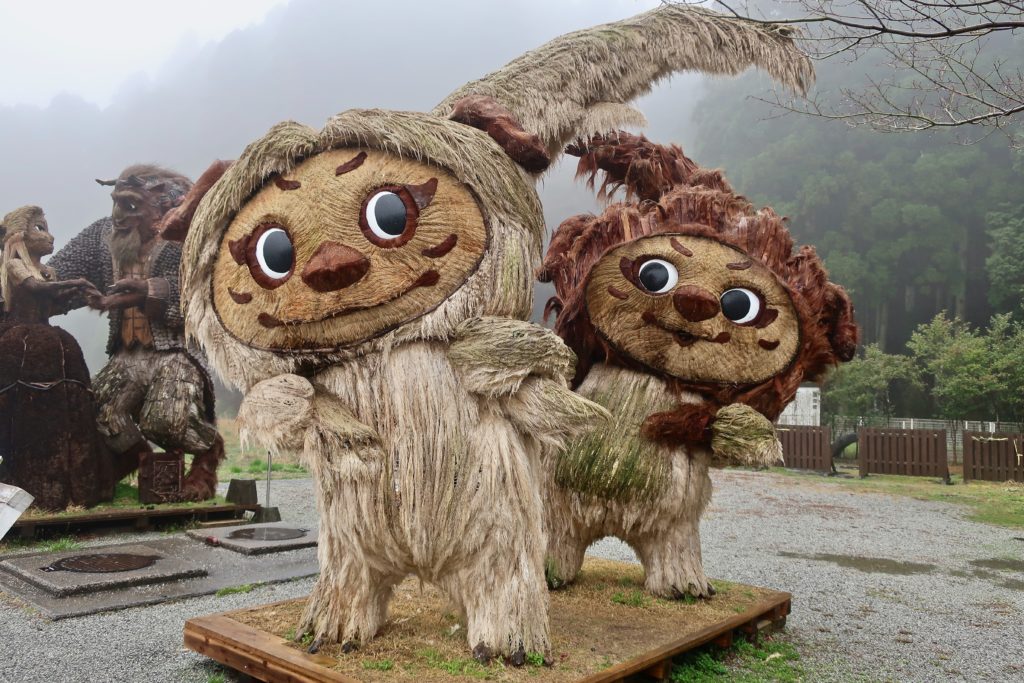
Photo credit : Chieko @untappedkumamoto
People risked their lives building a stone bridge, hoping to their lives better for the future. Tsujunkyo is blood, sweat and tears of people in the past.
Visit Tsujunkyo and learn more about it.
I’m sure you’ll love Tsujunkyo more!
※ I’ll introduce Gorougataki waterfall in the next article. It’s near the Tsujunkyo bridge so please check it later!
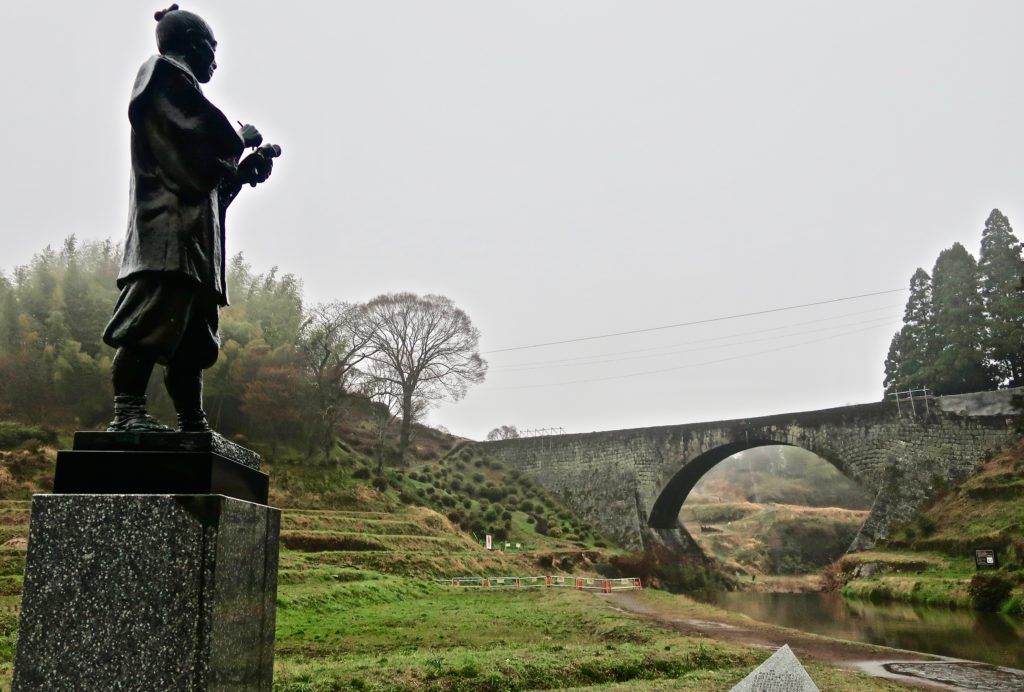
Photo credit : Chieko @untappedkumamoto
【Information and links】
通潤橋(Tsujunkyo bridge)
Website in English
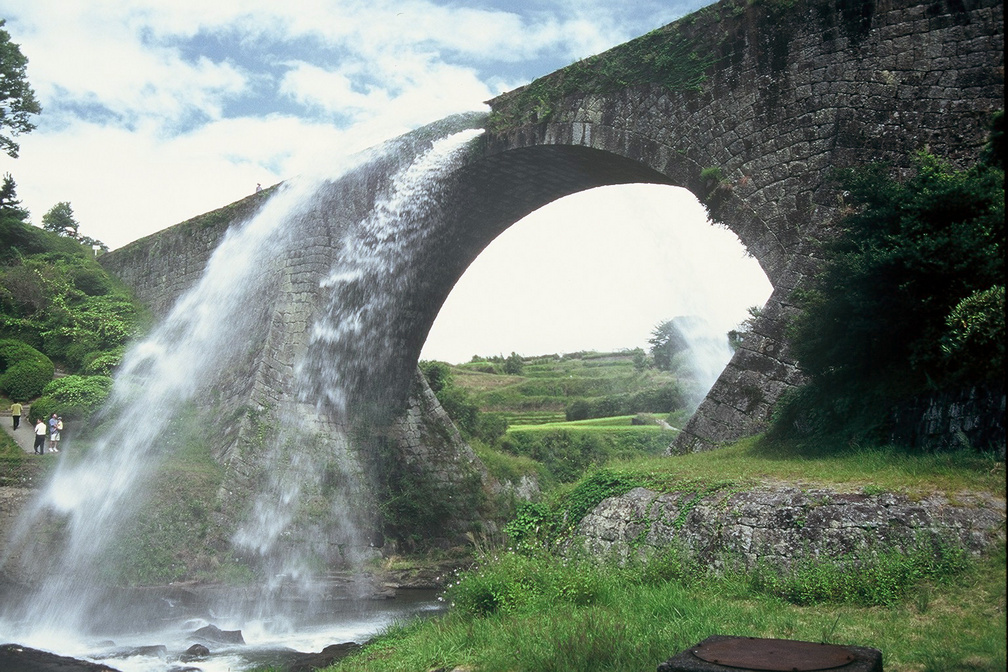
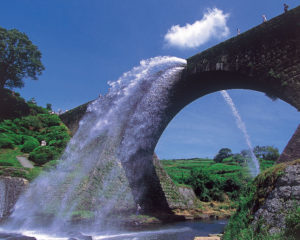
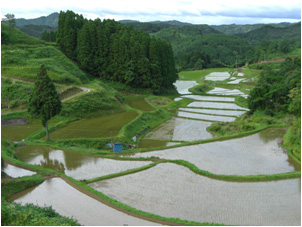
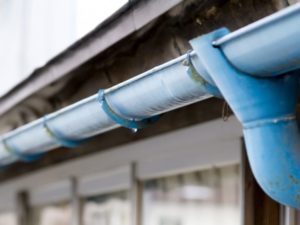
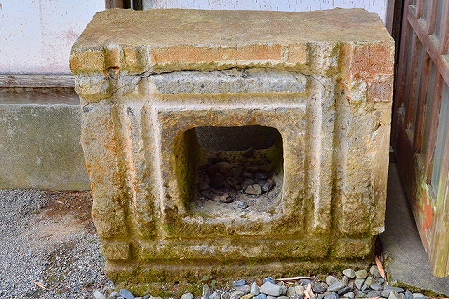
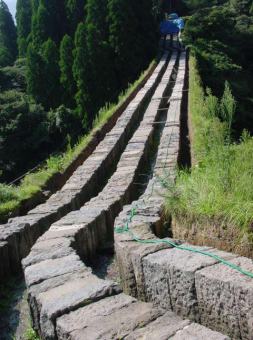
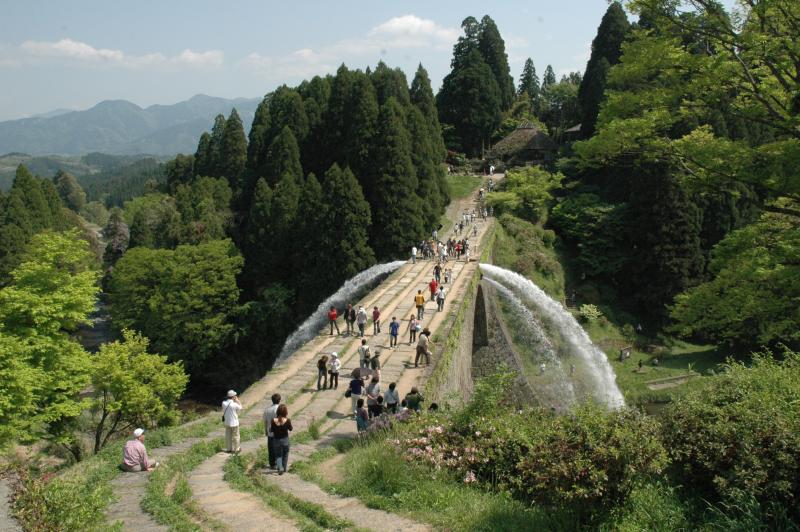
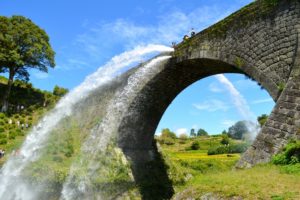
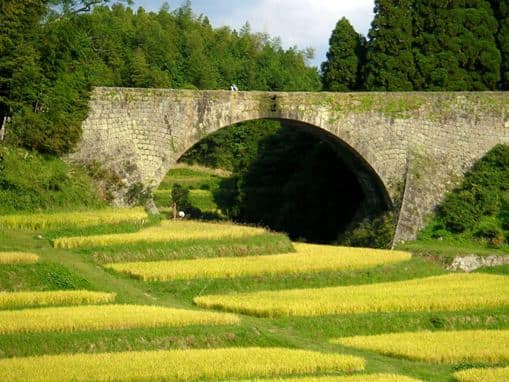

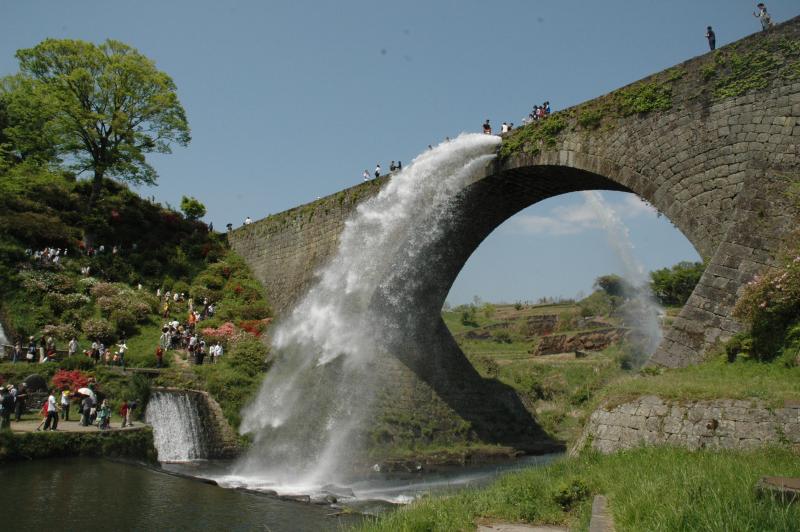
5 ピンバック